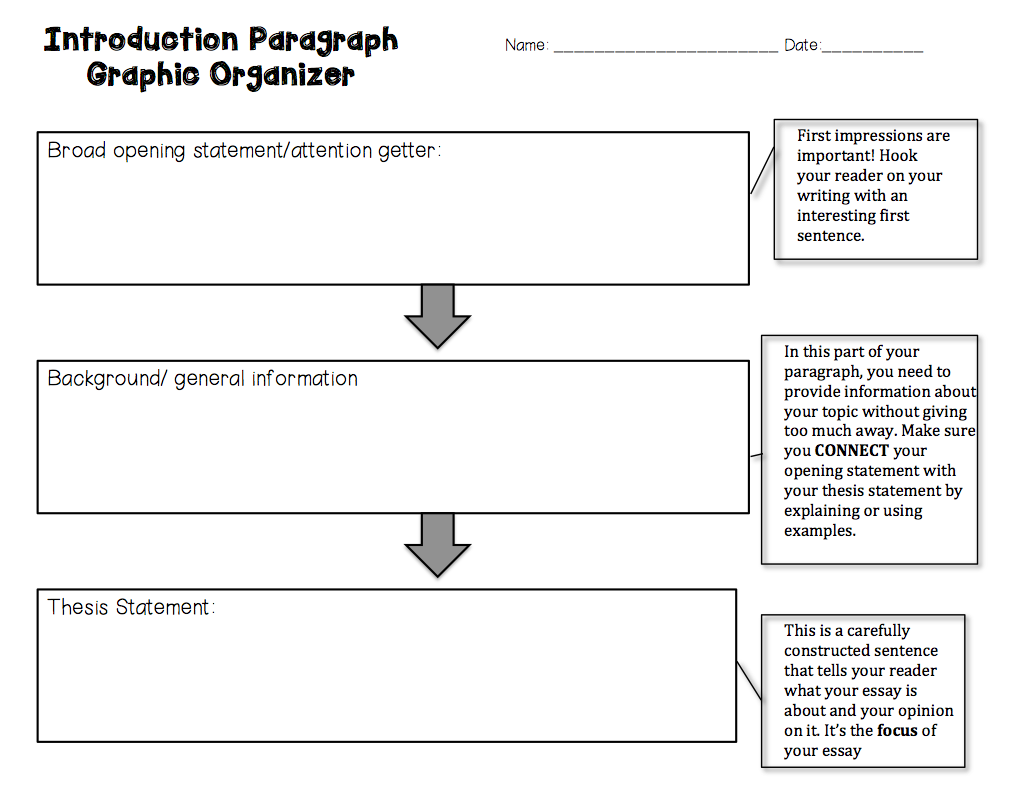An introduction needs to have 3 things.
1. Something to get the readers attention or get them interested
2. Necessary background information
3. The thesis statement
This graphic organizer is something I created to help beginning writers write an introduction.
1. Begin with a shocking statement. - Use some facts from a text that goes along with your essay or make a bold statement about the topic of your essay. This grabs the readers attention and makes them want to keep reading.
2. Ask a question- Ask a question and have your whole essay be a response to the question you posed. Be careful though. This is an "easy" way for students to start their essays and very often they get stuck using the questioning technique.
3. Begin with a personal anecdote - Make a connection to your essay! Refer to something that happened to you. This can be a VERY powerful way to start an essay because it makes the reader want to see how your experience unfolds throughout your essay.
4. Give historical background to set the scene- Depending on the topic of your essay, you might want to provide some background information to set the reader up to successfully understand your writing.
5. Use a quote from someone who is knowledgeable on the subject. Don't forget to give the author credit for their quote :)
6. Begin with a sensory description of the setting- Set the scene using descriptive words that pull the reader in.
If you would like to see a full PowerPoint Lesson with graphic organizers on how to write an introduction, thesis, and conclusion, click HERE.









